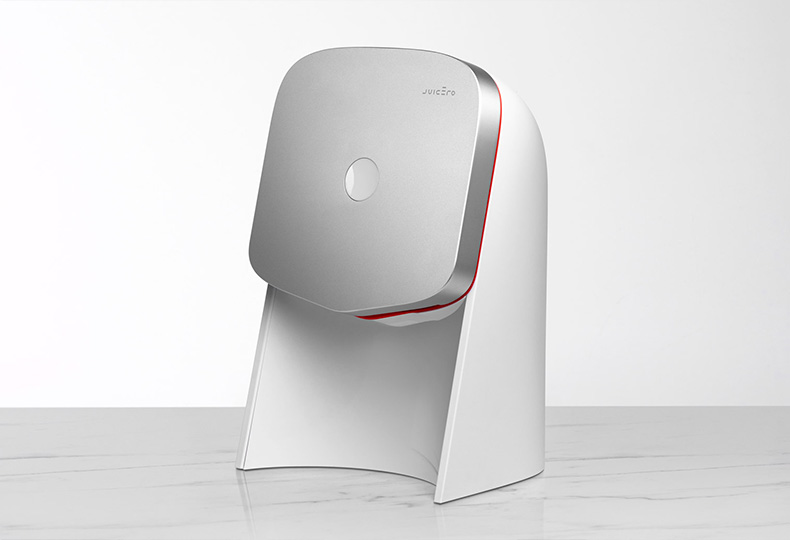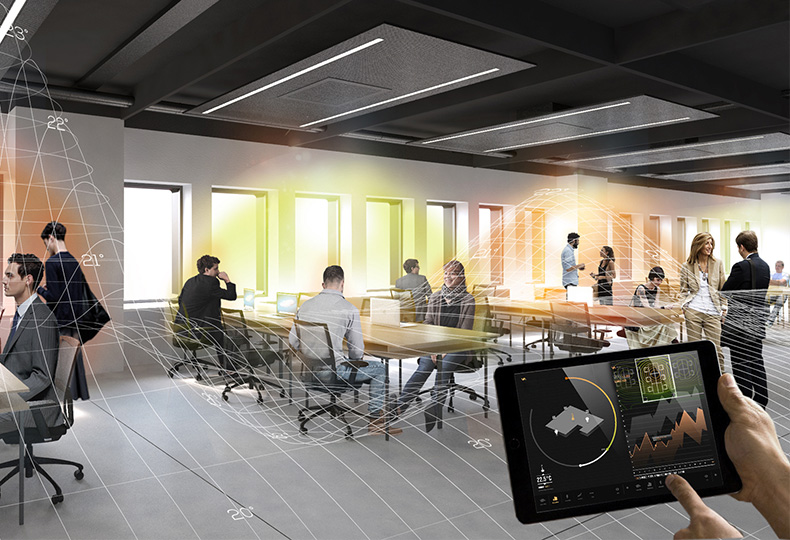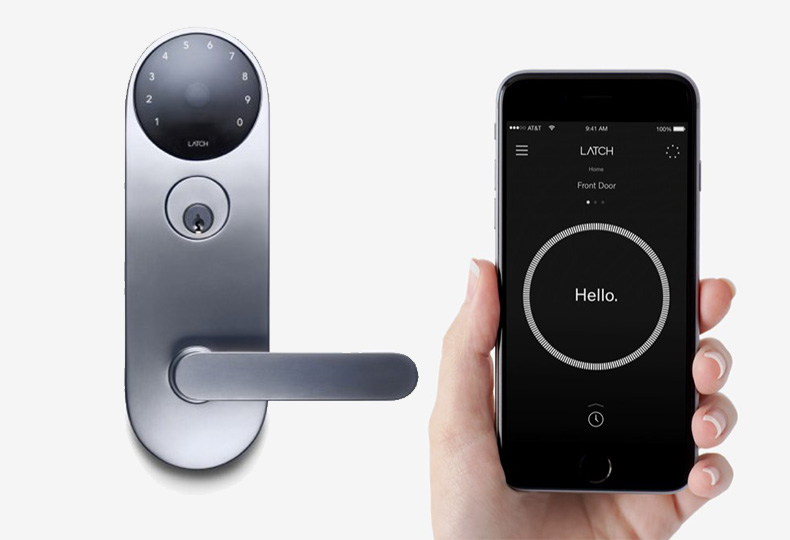
Internet of Things and Design: Recent Projects and Main Concerns
A toothbrush that collects data on your oral cavity health and a comb that monitor your hair condition – these are the future we live in already today. Internet of Things is a new promising area of interest for designer and architects like Yves Behar and Carlo Ratti, although there are also those who remain wary of such new technology, such as Oki Sato and Rem Koolhaas. So today we’re going to tell you about the recent projects and main concerns in this field.
Practical use
As the saying goes, the laziness is the engine of progress. So the Internet of Things is mainly intended to make one’s life as easy as it can be or at least to relieve the burden of the most household duties. Thus, Panasonic has developed the smart washing machine that tidily folds the clean clothes in a pile ready for storage in the humper drawer inside the device with robotic arm (!) after the washing and drying is complete, and the smart refrigerator that responds to the voice commands, while Philippe Starck has designed the special sensors that are installed on the home radiator and adjust temperature in the room depending on the number of persons present and their current level of physical activity.

Live OS smart desks are designed to encourage physical activity of office employees.
Nevertheless, the most famous and notorious designer who managed to tame the Internet of Things (IoT) is Yves Behar, Swiss designer from San Francisco, who has already developed a whole lot of different items intended to optimize the various areas of our lives. For example, one of the recent designs by Behar’s studio is the robotic crib that not only rocks the baby by itself, if it starts to cry, but also collects the data on the quality of its sleep and send them directly to the parents’ smartphones. Another Behar’s project, although from completely different field, is collaboration with American furniture brand Herman Miller. Together they have designed the smart office furniture line called Live OS. It seems like that everyone is already aware of health implications associated with sedentary lifestyle, and this project is specifically intended to encourage an employees tired of daylong sitting to get a little exercise. Currently Live OS consists of the special tables that automatically remind users when they've been sitting for too long, either through gentle vibration or by lighting up a small indicator module and feature height-adjustable surface that can rise up so you can work on the computer in a standing posture. The line will soon be expanded to include chairs, which can gather more detailed data about employees' postures. The designer is absolutely sure that the smart workplaces are the future of modern offices.

Juicero juicer has been awarded with the dubious epithet of the worst ever product by the Silicon Valley, which has already received enough accusations of being detached from real world.
Seems like, the Internet of Things is indeed intended to serve the human needs, although sometimes the one may get an impression that technology exists only for the sake of technology. This spring, same old Behar launched smart juicer Juicero that instead of amazement and surprise raised bafflement and perplexity among the audience. The device squeezes the juices not from the real fresh fruits, but from the pre-fabricated mixtures supplied in the special patented packs. Twitter users tried to squeeze the packs with their own bare hands and found out that the result was pretty similar to the one you get when utilizing cumbersome 400$ worth machine.
Saving resources
Nevertheless, the Internet of Things may be used not only to make one’s everyday life easier in terms of household duties, but also to solve much more urgent and persistent problems, such as saving of natural resources. Such projects, which are also sometimes called responsive architecture, are mostly designed by architect Carlo Ratti. His Office 3.0 is the system of sensors that control lighting, temperature and water supply in the room. The key point here is to optimize the processes: the lighting system adjusts to the time of the day and switches off the lights when the room is empty, the climate control system heats the conference hall before an important meeting and saves the resources during the idle periods. The system also monitors employee behavior, tracks it and adjusts its mechanisms to ensure the most efficient work. The architect is convinced that such technology may decrease the energy consumption by up to 40%.

Moreover, Office 3.0 also allows each employee to set the so called “heat bubbles” with individual temperature regime that will follow him or her whenever they go in the office.
Right balance
There are many designers who are much less optimistic about the hi-tech future. Japanese designer and founder of Nendo design bureau, Oki Sato is known for working on roughly 400 projects at a time, although is leery of introducing the Internet of Things technology into his products. “I think the technology shouldn't look like technology”, Sato says. “It should blend into everyday life, it shouldn't distract you, but should respond to your needs”. When developing an item, the designer usually tries to imagine how his grandma would react to a new product: wouldn’t she be scared and would she understand you to handle a new device?
But still, the main problem of the Internet of Things solutions is different. Without Internet connection or power supply, all these connected products will be actually useless. This may not be an issues for a smart toothbrush that gathers data on oral hygiene, since you may simply replace it with another conventional item, but how about the case when entire complex business processes are based on technologies? “At the moment we have eight 3D printers in our studio working 24 hours a day, and if we lose electricity we can't design things any more” – the designer says and then notes: “In the end the sketchbook works the best”. According to the Japanese designer, the most important is to find a right balance between technology and things that do not use any electricity or have anything to do with the Internet.

"Latch" is a smart door lock designed by Studio Meyerhoffer. It grants access to the house without key, but the key is still provided just in case the Internet connection goes down.
Personal data
Another notorious skeptic is architect Rem Koolhaas. In an interview for Dezeen, he described the new technologies as “potentially sinister”. “It is totally astonishing that people are willing to sacrifice their privacy for convenience” – Koolhaas says. Indeed, another important problem with the Internet of Things is a large volume of personal data that potentially may leak to someone’s malevolent hands. Indeed, when even your teapot already knows everything about you, just imagine how much of your personal information may be stored by the entire apartment stuffed with hi-tech connected items.

